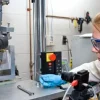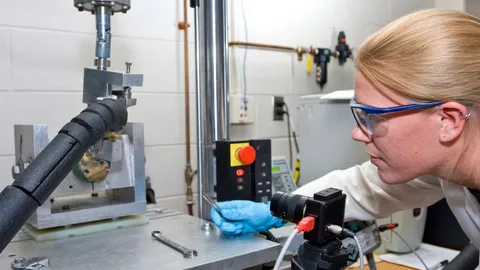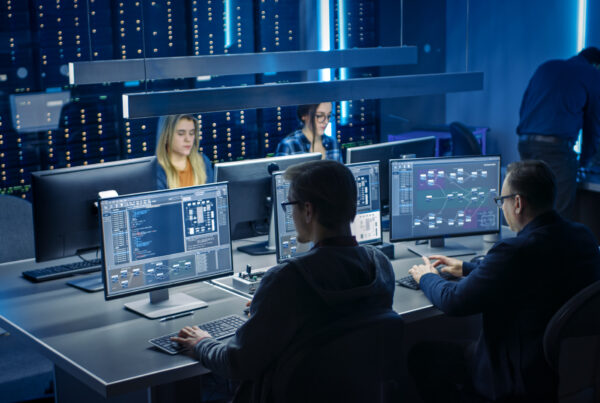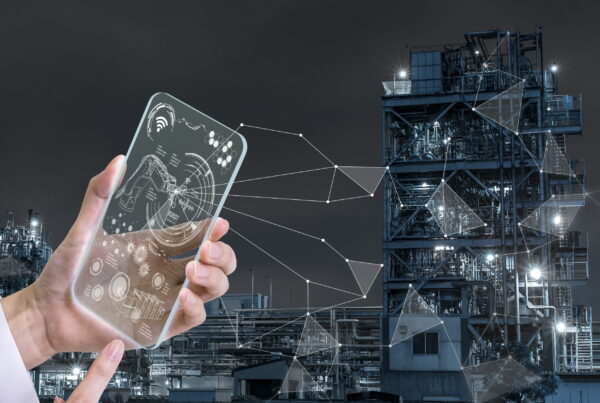In the intricate dance between innovation and quality assurance, diminutive testing devices often orchestrate the most profound transformations. Their compact dimensions belie their outsized influence on industries ranging from aerospace to medical technology. These unassuming instruments some no larger than a credit card safeguard lives, validate breakthrough technologies, and ensure the seamless operation of complex systems worldwide. The relationship between miniaturization and testing efficacy continues to evolve, creating remarkable capabilities that were unimaginable mere decades ago.
Nanoscale Precision Sensors
The realm of nanoscale sensing has revolutionized how we detect, measure, and analyze phenomena previously invisible to conventional instruments. These microscopic marvels leverage quantum effects and molecular interactions to achieve sensitivity that transforms testing processes across disciplines. A single sensor, often measuring less than a millimeter across, can now detect temperature variations of 0.001 degrees Celsius, pressure changes at the molecular level, or the presence of specific compounds in concentrations of parts per trillion.
In pharmaceutical testing, these sensors enable real-time monitoring of drug interactions at the cellular level, dramatically accelerating development timelines while enhancing safety profiles. Manufacturing processes benefit from their ability to detect microscopic flaws in materials, preventing potential failures before they manifest. Environmental monitoring systems deploy networks of these sensors to create comprehensive pollution maps with unprecedented granularity, identifying emission sources with pinpoint accuracy.
The true innovation lies not just in their sensitivity but in their specificity the ability to distinguish target molecules amid complex biological or chemical matrices without cross-reactivity. This selectivity transforms testing from broad screening to precise identification, eliminating false positives that plague traditional methods.
Microfluidic Testing Platforms
The marriage of microelectronics and fluid dynamics has birthed testing platforms that manipulate infinitesimal liquid volumes with extraordinary precision. These microfluidic devices contain intricate networks of channels, valves, and reaction chambers etched into substrates sometimes smaller than a postage stamp. Within these miniature labyrinths, complex biochemical reactions unfold under perfectly controlled conditions, yielding insights impossible to obtain through conventional methods.
These platforms have democratized sophisticated testing by reducing reagent consumption by up to 99%, slashing costs while minimizing environmental impact. A single drop of blood, when introduced into these systems, can simultaneously undergo dozens of different analyses, providing comprehensive health profiles in minutes rather than days. The controlled environment within these sealed systems eliminates contamination risks that compromise traditional laboratory testing.
Perhaps most revolutionary is their integration with artificial intelligence, creating autonomous testing ecosystems that adapt protocols in real-time based on emerging results. These self-optimizing systems continuously refine their methodologies, achieving sensitivity and specificity beyond human-designed approaches. What begins as a diagnostic test can evolve into a discovery platform, revealing unexpected correlations and novel biomarkers.
Portable Spectroscopic Analyzers
The migration of sophisticated spectroscopic techniques from laboratory benchtops to handheld devices represents one of testing’s most significant paradigm shifts. Modern portable analyzers combine multiple spectroscopic methods infrared, Raman, X-ray fluorescence in instruments weighing less than a kilogram. These devices decode the molecular fingerprints of materials with accuracy approaching laboratory equipment costing hundreds of times more.
Their impact resonates most profoundly in field testing scenarios where transporting samples to laboratories proves impractical or impossible. Environmental inspectors now identify soil contaminants on-site within seconds, enabling immediate remediation decisions. Food safety inspectors detect adulterants and contaminants while still at production facilities, preventing tainted products from entering distribution chains. Archaeological conservationists analyze pigments and materials non-destructively, preserving cultural heritage while uncovering historical techniques.
The democratization of this technology has profound implications for global equity in testing capabilities. Regions without sophisticated laboratory infrastructure can now perform analyses that would have previously required sending samples to distant facilities, waiting weeks for results. This accessibility transforms public health responses, environmental protection, and consumer safety in developing regions.
Wearable Biometric Monitors
The evolution of biometric monitoring from clinical settings to wearable formats has fundamentally transformed how we understand human physiology under real-world conditions. These unobtrusive devices—often embedded in clothing, accessories, or applied directly to skin continuously gather multiparameter data that reveals patterns invisible to periodic clinical testing.
Advanced wearables now simultaneously track dozens of physiological markers: heart rate variability, galvanic skin response, minute blood chemistry changes, and subtle movement anomalies imperceptible to observation. This continuous monitoring reveals transient phenomena and circadian variations that point-in-time clinical tests invariably miss. The holistic datasets generated enable correlations between seemingly unrelated parameters, uncovering complex physiological relationships.
In pharmaceutical trials, these devices capture medication effects and side effects with unprecedented fidelity, detecting subtleties that subjects might not notice or report. Athletes leverage these systems to identify performance optimization opportunities by correlating training inputs with physiological responses. Occupational safety improves through early detection of fatigue, dehydration, or environmental exposure, preventing accidents before physical symptoms manifest.
Miniaturized Environmental Simulators
Testing components and systems under extreme conditions once required massive environmental chambers consuming enormous energy and space. Today’s miniaturized environmental simulators recreate these harsh conditions from arctic cold to desert heat, vacuum to crushing pressure—in devices sometimes no larger than a microwave oven. These systems achieve remarkable condition stability while dramatically reducing energy consumption and spatial requirements.
The miniaturization breakthrough enables testing protocols previously considered financially or logistically prohibitive. Product developers now subject prototypes to thousands of temperature cycles, simulating years of seasonal changes in days. Materials researchers create localized extreme conditions to observe failure modes with high-speed imaging. The pharmaceutical industry tests drug stability under precisely controlled variable conditions, predicting shelf life with unprecedented accuracy.
Most significantly, these compact simulators enable parallel testing—running dozens of simultaneous tests under slightly varied conditions. This parallel approach transforms the sequential trial-and-error methodology into a concurrent exploration of possibility spaces, dramatically accelerating development cycles while improving outcome confidence.
MEMS Testing Arrays
Microelectromechanical systems (MEMS) have transformed testing through the integration of mechanical elements, sensors, actuators, and electronics on microscopic silicon substrates. These remarkable devices combine sensing and mechanical action at scales measured in micrometers, enabling testing methodologies impossible with conventional instruments. Their inherent batch fabrication makes previously exotic testing capabilities economically viable for routine applications.

MEMS accelerometers detect vibrations so subtle they were once measurable only with room-sized equipment, enabling predictive maintenance by identifying machinery failures before audible or visible symptoms develop. Pressure sensors with sensitivity measuring fractions of Pascals transform leak detection across industries. Micro-cantilever arrays detect surface adhesion forces at the molecular level, revolutionizing material testing and coating verification.
The integration of these systems into distributed arrays creates testing networks of unprecedented resolution. Structural health monitoring deploys hundreds of synchronized MEMS sensors throughout bridges and buildings, creating four-dimensional stress maps that reveal developing weaknesses years before traditional inspection methods could detect them. Similar arrays in aerospace applications track material fatigue across aircraft structures, enhancing safety while optimizing maintenance schedules.
Precision Dimensional Verification Instruments
The assessment of physical dimensions has transcended calipers and micrometers with the advent of miniaturized optical and tactile measurement systems. These sophisticated go no go gauge descendants achieve micron-level accuracy in instruments small enough to fit in a pocket. Modern go no go gauge evolutionary offshoots combine traditional dimensional verification with advanced imaging capabilities, creating comprehensive inspection records rather than simple pass/fail assessments.
The contemporary go no go gauge philosophy extends beyond mechanical dimensions to encompass electrical characteristics, surface properties, and material composition in integrated testing platforms. Where a traditional go no go gauge provided binary acceptance information, these advanced systems generate quantitative data across multiple parameters, enabling statistical process control and predictive quality management.
Manufacturing environments now deploy these sophisticated go no go gauge descendants at multiple production stages, creating digital inspection trails for every component. This continuous verification replaces sampling-based quality control with comprehensive testing, eliminating the statistical uncertainties inherent in traditional inspection methods. The resulting datasets enable machine learning algorithms to identify subtle correlations between production variables and quality outcomes, continuously refining manufacturing processes.
Testing Devices
At the frontier of miniaturization, quantum effect devices harness subatomic phenomena to achieve testing capabilities that defy classical limitations. These instruments detect magnetic fields millions of times weaker than Earth’s background magnetism, electrical potentials at the single-electron level, and gravitational variations caused by density differences within materials. Their extraordinary sensitivity opens entirely new testing dimensions across scientific and industrial applications.
Quantum magnetometers detect microscopic ferrous contaminants in food, pharmaceuticals, and consumer products with sensitivity exceeding traditional methods by orders of magnitude. Superconducting quantum interference devices identify structural weaknesses in critical infrastructure by mapping minute magnetic field variations caused by stress concentrations. Quantum tunneling sensors measure barrier coatings with atomic-layer resolution, ensuring perfect protection in critical applications.
The non-invasive nature of these technologies enables testing without altering the subject material a crucial advantage when examining delicate biological samples, irreplaceable cultural artifacts, or mission-critical components that cannot be sacrificed for destructive testing. This preservation of the tested subject represents a fundamental shift from consumption-based testing toward observation-based methodologies.
In Conclusion
The miniaturization revolution in testing instrumentation embodies a profound paradox: as devices shrink, their impact expands exponentially. These diminutive tools have democratized sophisticated testing methodologies, bringing laboratory-grade capabilities to field environments worldwide. Their accessibility has transformed how we ensure quality, safety, and performance across virtually every industry and scientific discipline.
The convergence of miniaturized testing with artificial intelligence and cloud connectivity creates distributed intelligence networks that continuously evolve, learning from each measurement to refine future testing protocols. This self-improving ecosystem transcends the limitations of individual instruments, creating collective capabilities greater than the sum of their parts.
As these technologies continue their inevitable progression toward even smaller dimensions and greater capabilities, they reshape our relationship with the physical world. The invisible becomes visible; the unmeasurable becomes quantifiable. In this transformation lies perhaps their greatest impact: expanding the boundaries of what we can know, test, and ultimately create. These small devices don’t merely test our current reality they enable the imagination and validation of possibilities previously beyond our reach.







